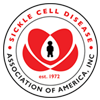Trusted Resources: Evidence & Education
Scientific literature and patient education texts
Barriers and Facilitators to Care for Individuals With Sickle Cell Disease in Central North Carolina: The Emergency Department Providers’ Perspective
source: PloS One
year: 2019
authors: Masese RV, Bulgin D, Douglas C, Shah N, Tanabe P
summary/abstract:Background:
Sickle cell disease (SCD) is an inherited blood disorder associated with acute pain crisis and other complications that lead to frequent emergency department (ED) visits. To improve outcomes, the National Heart, Lung and Blood Institute (NHLBI) published recommendations for management of acute pain crisis. NHLBI also funded eight centers across the United States to participate in the Sickle Cell Disease Implementation Consortium. This six-year effort consists of two phases. Phase one involved conducting needs assessments of barriers and facilitators to SCD care. The aim of this study was to describe challenges and facilitators to caring for SCD from the perspective of ED providers in central North Carolina (NC).
Methods and Findings:
We conducted a needs assessment survey with ED providers throughout NC. We also conducted focus groups and an interview with ED providers from three healthcare facilities in central NC. One hundred and eleven surveys (60.6% physicians, 26% registered nurses, 13.5% physician assistants) were completed and 13 providers participated in 3 focus groups and 1 interview. Slightly more than half (50. 4%) utilized individualized dosing protocols to treat sickle cell pain. Only 32.4% of the providers were aware of the NHLBI SCD recommendations. Barriers to care from the survey included: patient behavior (67.57%), the opioid epidemic (67.57%), overcrowding (64.86%), and concern about addiction (49.55%). Perceived barriers to care identified in the focus groups and interview included: high patient volumes, lack of SCD care protocols, poor communication among providers and stigma. Facilitators to care included: individualized pain plans, comfort prescribing opioids and electronic medical records.
Conclusion:
SCD care is influenced by many factors. Our results illuminate the need for increased use of the NHLBI SCD recommendations, individualized pain protocols, and use of electronic medical records and other care-interventions, specifically geared towards improving provider knowledge and mitigating provider bias.
DOI: 10.1371/journal.pone.0216414
read more full text
Related Content
-
Don’t Overlook Eye CareAs I sit waiting for my sister in the su...
-
Decreased hospital readmissions for vaso occlusive crisis with implementation of a Sickle Cell Pain Action Plan (SPA...Vaso occlusive crisis (VOC) is the most ...
-
Improving Quality of Life Through Sickle Cell Research: Marsha J. Treadwell, MDhttps://www.youtube.com/watch?v=DA51AAUH...
-
Care Coordination for Children With Sickle Cell Disease: A Longitudinal Study of Parent Perspectives and Acute Care ...INTRODUCTION: Care coordination (CC), a ...
-
Screening for sickle cell and beta thalassaemiaSickle cell and beta thalassaemi...
-
St Jude Patient Story: Brycehttps://www.youtube.com/watch?v=p6xWFUlQ...
-
The neglected and forgotten Sickle Cell Disease – A silent mass killer in Kenyahttps://www.youtube.com/watch?time_conti...
To improve your experience on this site, we use cookies. This includes cookies essential for the basic functioning of our website, cookies for analytics purposes, and cookies enabling us to personalize site content. By clicking on 'Accept' or any content on this site, you agree that cookies can be placed. You may adjust your browser's cookie settings to suit your preferences. More Information
The cookie settings on this website are set to "allow cookies" to give you the best browsing experience possible. If you continue to use this website without changing your cookie settings or you click "Accept" below then you are consenting to this.




 +myBinder
+myBinder
